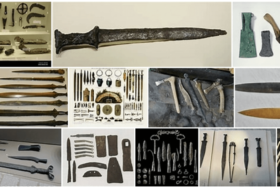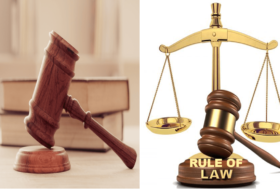Information transmission is the process of moving information from a source to the user. Information is an important factor of production in today’s business world. It originates from a source before it gets to the user.
For information to move from the source to the user, there could be some degrees of processing. These degrees or levels of information processing are called information evolution.
The reliability of information and its relevance as a factor of production depends on the source. Also, the usability of information by the end-user depends on the efficiency of the transmission channels. Therefore, information transmission and information evolution are indispensable in today’s business environment.
Information evolution and information transmission are key aspects of information technology that should not be overlooked. In this article, we discussed the two topics in detail for the benefit of Junior Secondary school students.
We used the information technology curriculum for Junior secondary schools to prepare this article. Therefore, beginners in the world of information technology will benefit from it.
In this article, you will learn and understand the meaning of:
- Information technology
- Information transmission
- Information evolution
- Methods and modes of information transmission, and
- Stages of information evolution.
Definition of Basic Terms
In this section, we are going to define the following terms:
- ICT
- Information transmission, and
- Information evolution
What is ICT?
ICT means Information and Communication Technology. It is an umbrella term that is used to define communication devices that use digital technology. They include communication devices that input, store, retrieve, manipulate and transmit digital data.
These communication devices or applications include radio, television, cellular phones, computer and network hardware and software, and satellite systems.
What is information Evolution?
Information evolution could be defined as a process of changing from simple techniques of data and information processing to complex and advanced methods through inventions and innovations.

When information originates from a source, there is need for it to be processed for efficient information transmission.
Information evolution could be classified into four different stages, namely:
- the invention of printing,
- the invention of the radio and television,
- the invention of computers, and
- the linking up of computers with information and communication technology (ICT).
What is Information Transmission?
Information transmission is the process of passing information from the source end to the receiving end. It could be defined as the physical transfer of information from point-to-point or point-to-multipoint in a communication channel.

Point-to-point and Point-to-multipoint Information Transmission
The channel could be copper wires, optical fibers, wireless communication channels, or storage media. The data transmitted are represented as an electromagnetic signal, such as an electrical voltage, radio wave, microwave, or infrared signal.
Methods of Information Transmission
Information becomes relevant to the productive world if it leaves the source to the users. For information to reach the users, there are channels or methods of transmitting the information.
Different methods have been used at different times of civilization. During ancient times, there are methods of information transmission used. And in the world, today, faster and more accurate methods are in use.

You can find some of the ancient methods of information transmission in use today. This is because these methods are indispensable. Let’s look at the ancient and modern methods of information transmission.
Ancient Methods of Information Transmission
In the ancient methods of information transmission, information is being passed on from the source end to the receiving end without using electronic communication channels. The ancient methods include:
- Oral: This method enables one to pass information across to the receiving end through face-to-face contact. The source is required to speak through the mouth to the audience face to face. This method is still being used today.
- Beating Drum: In communities and villages, drum beats are used to pass on information to the inhabitants of such communities. In such communities, the sound of the drumbeat determines the type of message being passed across. This method is still in use in most communities.
- Fire Lighting: Some communities use fire lighting to convey information. In this case, fire is lightened at a strategic place and the smoke sends a signal across to the inhabitants.
- Town crying: Town criers are people who use iron or wooden gongs to draw the attention of inhabitants of a community before passing information across to them. They walk on foot from one village to another, disseminating information to the inhabitants of the community.
- Whistling: Blowing off the whistle could be used as a means of drawing people’s attention or passing information across in some places.
- Drawing diagrams: The drawing of diagrams or the use of signs and signals are important methods of communication. They are used for directions and notifications of important landmarks and features.
- Making Representation: This is a means of passing information using a representative object.
Task one:
Identify the ancient methods of communication still in practice in your area and communicate the same in the comment section.
Modern Methods of Information Transmission
The modern methods of information transmission usually use electronic communication channels. Below are some of the popularly known methods.
- Prints: This is a means whereby information is typewritten on papers and passed on to the appropriate audience. Examples include letters, textbooks, magazines, newspapers, etc.
- Telephone: A telephone is a communication device that allows two or more users to communicate. It is a kind of face-to-face communication when the users are not physically present. Telephone communication guarantees instant feedback between users.
- Telex: Telex is a device that allows one to send across text messages through a switched network of teleprinters. The use of telex has declined recently due to the advent of facsimile and electronic mails.
- Radio: Radio is used to broadcast audio information to a group of people at the same time. The group of people could be in different locations, buts within the radio transmission area. One must have access to a radio device to be able to receive radio signals.
- Television: Television is used to broadcast audio-visual information to a group of people at the same time. The group of people could be in different locations but within the TV transmission area. One must have access to a TV device to be able to receive TV signals.
- Facsimile: Fax is a machine that transmits the scanned form of texts and images through a telephone line that is connected to a printer. Fax can be used to transfer both texts and images.
- Satellite: Satellite is an object placed into orbit for purposes such as earth surveillance, communication, weather forecasts, etc. Communication satellites are used for telecommunications, radio and tv broadcasting, and more.
- Internet: This is a global system of interconnected computer networks of private, public, academic, business, and government networks. Anyone at any location with the right devices can have access to the information shared on the internet.
- GSM: Global System for Mobile communication is an open, digital cellular technology used for transmitting mobile voice and data services. It was developed by the European Telecommunications Standards Institute (ETSI).
Classification of Means of Information transmission
There are two major means of transmitting information, namely:
- electronic and
- non-electronic.
In electronic means, information transmission is from the sender to the receiver via an electronic communication channel. Electronic means of information transmission include telephone, telegraph, telex, radio, etc.
The non-electronic means of transmitting information do not require electronic communication channels. Nonelectronic means of transmitting information include prints such as letters, memos, etc.; orals, drum beats, fire lighting, whistling, etc.
All modern methods of information transmission except prints are electronic means of transmitting the information. Similarly, all ancient methods of information transmission including prints are non-electronic means of transmitting the information.
Modes of Information Transmission
When information is transmitted from a source to the destination, there different modes of receiving such information. There are three (3) main modes of information transmission: audio, visual, and audio-visual.
- Audio: This is a model that permits the receiver of information to listen to the content of information disseminated anywhere through a device that produces sound. All methods of transmitting information that enables the receiver to hear sound from the sender utilize audio mode. Examples of audio modes include radio, telephone conversation, oral, beating drums, whistling, and town crying.
- Visual: This is a mode of receiving information through a form that can be read or looked at. The receiver does not require an additional device to read such information when they are transmitted. This includes all methods of information transmission that enable the receiver to see and read the transmitted information. Examples are prints, email, telex, fax, internet, gsm, fire lighting, and drawing diagrams.
- Audio-visual: Audiovisual mode combines the power of audio and visual modes to deliver information that is more understandable to the receiver. These include all methods of disseminating information that enables the receiver to see and hear the transmitted information. Examples of audio-visual modes include television, making representation, satellite communication, the internet, and GSM.
Stages of Information Evolution
The invention of Printing
Printing could be defined as a process for reproducing text and images on paper with ink or toner using a printing press. The invention of printing with movable type marks the beginning of modern printing and the advent of the information explosion. Prior to this period, records have it that the number of manuscript books in Europe can be counted in thousands while 50 years after the invention of printing, available books were more than 9 million. The invention of printing with movable type is credited to a German Goldsmith, Johannes Gutenberg in 1439.[1]
- Modern printing started with block printing. In block printing text and images are carved in woods. The carved woods are inked and pressed on a paper or textile. It is still in use by graphic artists to make banners. Books that were written during this period were copied by hand.
- After block printing, the next was lithography[2]. This is a method of printing on a smooth surface. It is still in use by most old printers.
- After lithography were color printing, screen printing, and flexography. Flexographic printing is a modern printing method that can be used to print banners, labels, bags, and plastics.
- In 1960, Xerox introduced a xerographic office photocopier and a modified xerographic copier which gave rise to the invention of laser printers in 1969.
- Dot-matrix printer was invented in 1970 while digital printing began in 1993.
The invention of Radio and Television
Radio and television were major agents of social change in the 20th century. It opened windows to learning other peoples’ cultures. It also brings distant events directly into the homes of millions all over the world.
Radio is a technology of wireless transmission of information by means of electromagnetic waves. The invention of the radio was facilitated by two other inventions: the telegraph and the telephone. These three technologies are closely related. Radio technology began as “wireless telegraphy”. The invention of the radio started with the discovery of radio waves.
Television is based on the principle of successive transmission of frames by means of scanning. The first television sets were commercially available in 1930. Today we have a digital television which uses digital technologies that allow a better quality of the TV image.
In 1925 Scottish inventor John Logie Baird successfully transmits the first recognizable image—the head of a ventriloquist’s dummy—at a London department store, using a device he calls a Televisor.
The Invention of Computer
The ideas of many scientists and engineers led to the invention of the computer. These ideas were developed in the 1930s and 1940s, mostly independently of each other, in Germany, Great Britain, and the USA, and were turned into working machines. The computer started as an abacus, invented in Babylon in 3000BC.
In 1617, John Napier of Scotland invented logarithms, a system that shows how to divide by subtraction and how to multiply by addition.
In 1642, Blaise Pascal built the first numerical calculating machine (first digital computer) in Paris.
In 1886 William Burroughs developed the first commercially mechanical adding machine that was successful. The advent of modern computing began in 1930. The table below summarized each invention, date, and description.
| Year | Inventors/Inventions | Description of Event |
| 1936 | Konrad Zuse – Z1 Computer | First freely programmable computer. |
| 1942 | John Atanasoff & Clifford Berry ABC Computer | Who was first in the computing biz is not always as easy as ABC. |
| 1944 | Howard Aiken & Grace Hopper Harvard Mark I Computer | The Harvard Mark 1 computer. |
| 1946 | John Presper Eckert & John W. Mauchly ENIAC 1 Computer | 20,000 vacuum tubes |
| 1948 | Frederic Williams & Tom Kilburn Manchester Baby Computer & The Williams Tube | Baby and the Williams Tube turn on the memories. |
| 1947/48 | John Bardeen, Walter Brattain & William Shockley The Transistor | No, a transistor is not the computer, but this invention greatly affected the history of computers. |
| 1951 | John Presper Eckert & John W. Mauchly UNIVAC Computer | First commercial computer & able to pick presidential winners. |
| 1953 | International Business Machines IBM 701 EDPM Computer | IBM enters into ‘The History of Computers’. |
| 1954 | John Backus & IBM FORTRAN Computer Programming Language | The first successful high-level programming language. |
| 1955 (In Use 1959) | Stanford Research Institute, Bank of America, and General Electric ERMA and MICR | The first bank industry computer – also MICR (magnetic ink character recognition) for reading checks. |
| 1958 | Jack Kilby & Robert Noyce The Integrated Circuit | Otherwise known as ‘The Chip’ |
| 1962 | Steve Russell & MIT Spacewar Computer Game | the first computer game invented. |
| 1964 | Douglas Engelbart Computer Mouse & Windows | Nicknamed the mouse because the tail came out the end. |
| 1969 | ARPAnet | The original Internet. |
| 1970 | Intel 1103 Computer Memory | The world’s first available dynamic RAM chip. |
| 1971 | Faggin, Hoff & Mazor Intel 4004 Computer Microprocessor | The first microprocessor. |
| 1971 | Alan Shugart &IBM The “Floppy” Disk | Nicknamed the “Floppy” for its flexibility. |
| 1973 | Robert Metcalfe & Xerox The Ethernet Computer Networking | Networking. |
| 1974/75 | Scelbi & Mark-8 Altair & IBM 5100 Computers | The first consumer computers. |
| 1976/77 | Apple I, II & TRS-80 & Commodore Pet Computers | More first consumer computers. |
| 1978 | Dan Bricklin & Bob Frankston VisiCalc Spreadsheet Software | Any product that pays for itself in two weeks is a surefire winner. |
| 1979 | Seymour Rubenstein & Rob Barnaby WordStar Software | Word Processors. |
| 1981 | IBM The IBM PC – Home Computer | From an “Acorn” grows a personal computer revolution |
| 1981 | Microsoft MS-DOS Computer Operating System | From “Quick And Dirty” comes the operating system of the century. |
| 1983 | Apple Lisa Computer | The first home computer with a GUI. |
| 1984 | Apple Macintosh Computer | The more affordable home computer with a GUI. |
| 1985 | Microsoft Windows | Microsoft begins the friendly war with Apple. |
The Link between Computers and ICT
ICT is about the use of computers and their applications while computers are essential devices necessary for the deployment of ICT.
Computers (hardware and software) enable users to access, store, transmit, and manipulate information in the field of ICT. Almost everything we do in this age involves information and communication technologies (ICTs).
For example, making phone calls, booking tickets online, watching premiership league, emailing friends, paying by credit card or withdrawing money from ATM and using household appliances.
At the heart of ICT are computers including, microprocessors in mobile phones, personal computers, large internet servers, and mainframes.
Knowledge of ICT simply teaches one how to use the computer system and installed applications to perform tasks.
Knowledge of computing teaches one how to design computers, architecture, and how computers work.
Notes
[1] Meggs, Philip B. (1998). A History of Graphic Design. John Wiley & Sons, Inc.
[2] Invented by Bavarian author Aloys Senefelder in 1796 (Meggs Philip)





Really helpful. Thanks a lot.
You’re welcome.